#prince nicholas of greece
Explore tagged Tumblr posts
Text
George and Marina: Duke and Duchess of Kent by Christopher Warwick #HouseofWindsor #Audiobook #BookReview
The #AudiblePlus catalog had a few books on the #royalfamily that I had to check out. One was about the #DukeandDuchessofKent, #QueenElizabethII aunt and uncle. #PrinceGeorge and #PrincessMarina both came from royal houses. #Audiobook #BookReview
For eight brief years, before he was tragically killed in a mysterious air crash during the Second World War, Prince George, Duke of Kent, son of King George V and Queen Mary, and his beautiful wife, Princess Marina of Greece and Denmark, were the British monarchy’s, indeed, high society’s, most glamorous royal couple; and as golden royal icons they are still remembered.As a young man,…

View On WordPress
#Abdication#Abdication Crisis#Albert Bridge Books#Duchess of Kent#Duke and Duchess of Kent#Duke of Kent#George and Marina#Grand Duchess Yelena Vladimirovna#House of Windsor#King Edward VIII#King George V#King George VI#Prince Edward#Prince George#Prince Nicholas of Greece#Prince of Wales#Princess Marina#Princess Marina of Greece and Denmark#Queen Elizabeth#Queen Mary#Tantor Audio
2 notes
·
View notes
Photo
Grand Duke Dmitri Pavlovich (far right) with his cousin Grand Duke Kirill Vladimirovich (second from the left), and uncle Prince Nicholas of Greece and Denmark (third from the left), 1910s.

29 notes
·
View notes
Text
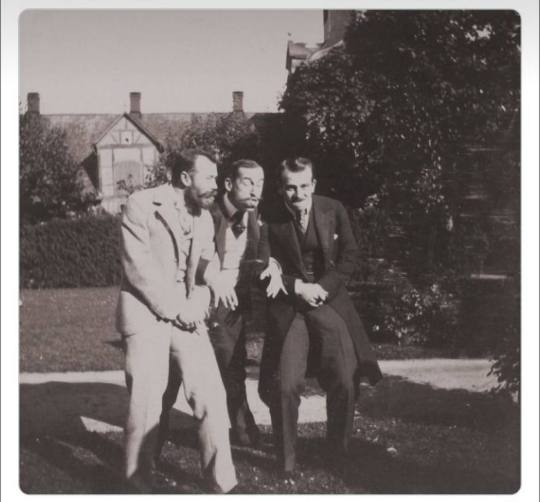
Tsar Nicholas II playing around with the princes of Greece and Denmark
1899
#dark academia#light academia#classical#academia aesthetic#escapism#academia#books and libraries#classic literature#books#architecture#old photograph#historical#history#1800s#19th century#tsar nicholas ii#princes#Denmark#Greece#royal core#cottage core#aesthetic#mood#vibe#tumblr
74 notes
·
View notes
Text
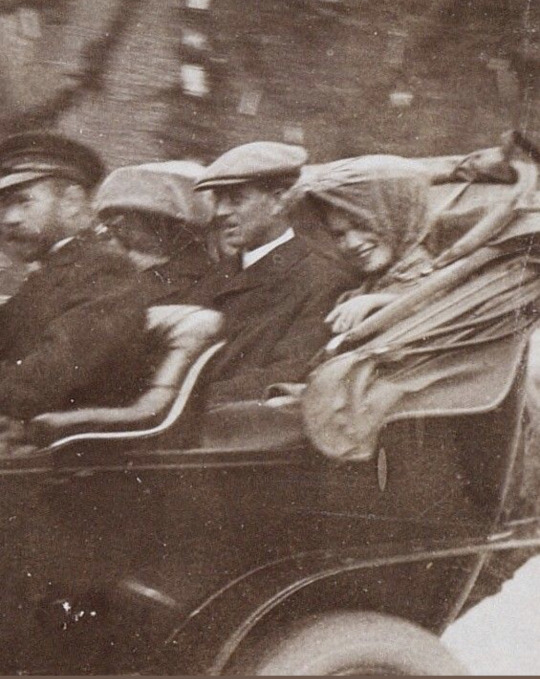
Crop of a smiling Grand Duchess Olga Nikolaevna with father Tsar Nicholas II, 1st-cousin-in-law and 1st-cousin-once-removed Prince Andrew of Greece and Denmark, and probably Grand Duchess Tatiana Nikolaevna, 1910
#olga nikolaevna#tsar nicholas ii#Prince Andrew of Greece and Denmark#1910#Romanovs#Romanov#OTMA#greek royal family#russian imperial family#russian history#prince Andrew#prince Andrew of Greece#Nicholas ii#grand duchess olga nikolaevna
96 notes
·
View notes
Text
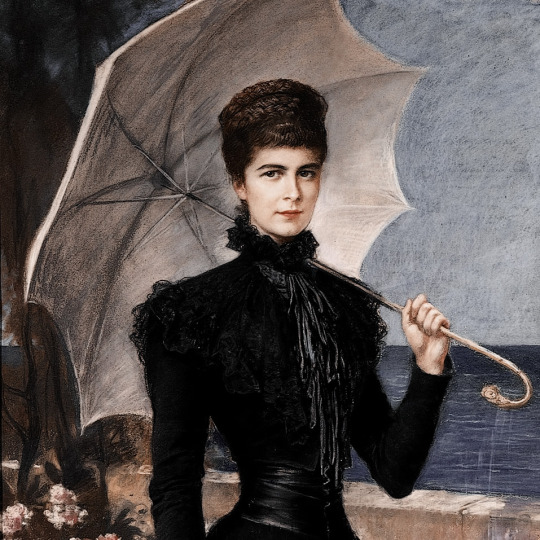

Empress Elisabeth of Austria and her Corfiot palace through the eyes of the Greek royals.
Greece was destined to offer the Empress Elisabeth the hospitality of its soil. She chose Greece as the country where she would hide herself and her sorrow. At Corfu she bought a site of ground from an old Corfiote Statesman called Braïla, and on it she built the Palace which she called "Achilleion", after her hero Achilles, whose statue was in the middle of the top garden terrace, and represented him at the hour of his death, drawing the arrow out of his heel. When in Corfu, it was understood, she was to be strictly incognito, and her wishes were always respected. One day, suddenly, when we least expected it, she arrived at Athens, having travelled by the ordinary steamer, and called at the Palace accompanied by a lady -in-waiting. She asked the porter whether she could see the King and Queen. On the porter's inquiring who she was, she replied she was "the Empress of Austria." Whereupon we were brought down to verify that statement . It seemed impossible╴but it was the Empress of Austria! Needless to say she obtained her interview, and after half an hour's conversation she took her departure, insisting that her visit should not be returned by my parents. As she was anxious to study Greek culture, she decided to learn modern Greek, and applied herself to the task with great energy and perseverance. She engaged a tutor for Greek conversation. Her first was Dr. Christomanos, an author and poet, who wrote a charming life of the Empress, which was translated into several languages. Her last was Count A. Mercati, who afterwards became Master of King Constantine's household. Accompanied by her tutor, the Empress used to go off on a five or six hours' walk, all over the island; and even for the picturesque ceremony of combing and brushing her hair the tutor had to be present, talking Greek to her all the time. She learnt to speak Greek quite faultlessly. In the arrangement of her house the Empress took great pride, setting up the statues of all her new "Gods"; Sophocles, Euripides, Plato and Aristotle. She also had a statue of Heine, the poet, erected in a shrine. When the Kaiser bought the Achilleion, he at once banished Heine, and raised Achilles from his recumbent position into a standing War Lord, with gilded helmet and shield, so that the first sight of Achilleion should be his glittering helmet. It is a pity that the Empress tried to improve the natural beauty of the spot. Her lack of taste, I may even ungraciously say her eccentricities, were almost an eyesore. There was a grotto of artificial rock and mirrors, destined as a home for monkeys, who luckily never came to inhabit it. Though the island abounded in oranges, she sent to Italy for her fruit. The view from the terrace over all the plain of Corfu, with its olive groves groups cypresses on one side and the sea and the mountains of Albania on the other one of the most exquisite I have ever seen.
The memoirs of His Royal Highness, Prince Nicholas of Greece and Denmark, My fifty years, 1926.
I was a child when the Empress came to Athens and saw her only once or twice, but I remember her more vividly than many people I knew far better. I imagine it was the same with everyone who came in contact with her. Her brilliant, beautiful and restless personality left an indelible impression. She was so enchanted with Greece that she decided to build a villa in Corfu. The site she chose could not have been more beautiful, about twelve miles outside the town, set on a high hill overlooking the sea on one side and a chain of mountains on the other. But she was too impatient even to look at the plans and gave the architect carte blanche. So instead of the simple cottage she had intended he erected an orate and hideous palace lavishly adorned with frescoes, statues and bronzes of every description. This atrocity cost the Austrian Govemment twelve million crowns, I believe. The Empress's life was dominated by the fear of losing her beauty. As she grew older it became an obsession. Hours were spent every moring brushing the glotious brown hair that she wore gathered into two great plaits coiled around her head. This hair-brushing was a matter of solemn ritual. Any hairs that fell out during the process were carefully collected and presented to the Empress on a silver salver. If their number proved to be too many the entire day was blackened to her. Once a captain of a Russian gunboat reported that he had seen a yacht coming into the Piraus harbour with a woman seated on the deck whose mass of hair reached down to the ground while two attendants stood behind her brushing it. " That could only be the Empress of Austria." said my father, when he heard the story. Later in the day a carriage drove up to the Palace and a mysterious visitor was announced, a lady who refused to give her name. It was, as we expected, the Empress Elizabeth. She insisted on preserving a strict incognito while she was in Greece, although it seemed rather unnecessary, since everyone knew who she was. She detested nothing so much as being photographed, or even looked at for that matter, and always carried a large fan with her on her walks, so that she could unfurl it and hide her face from the passers-by. The Empress was a fine woman in many respects, far finer, I think, than most of her biogtaphers have represented her. Intelligent, intuitive, sensitive, she had all the qualities to make a great empress. But she was tragically lacking in a sense of proportion. Even in the small issues of everyday life she had no idea of modera-tion. She could not take anything up without making it a mania. While she was in Corfu she set herself to learn Greek, although she had gone there to rest. Now Greek is a complicated language and its study is hardly to be recommended as a restful pursuit. The Empress certainly did not regard it as such either for herself or any one else, for she wore out her two teachers, Count Mercati and Mr. Christomanos. Every day she walked ten or twelve miles with one or the other, talking Greek all the way and, even during the hair-brushing ceremony, one of them was always present reading to her. Her figure became another obsession with her. Although she was exaggeratedly slender when she came to Greece (she weighed, I believe, only seven stones) no Hollywood film star could have followed out a more Spartan regime. Her constant dieting made her irritable and depressed. Even when she lunched with my mother and father she would often eat nothing but a salad and some fruit, and she would start off immediately afterwards on one of her exhausting walks, skimming over the ground like a restless, beautiful wraith.
The memoirs of His Royal Highness, Prince Christopher of Greece and Denmark, 1938.
#long af post i’m sorry#empress elisabeth of austria#empress sisi#greek royal family#prince nicholas of greece and denmark#prince christopher of greece and denmark
121 notes
·
View notes
Text

⋆ ˚。⋆୨♡୧⋆ ˚。⋆
King George I of Greece, Prince Nicholas , Prince Constantine, Princess Alexandra, Prince George and Queen Olga in 1877. Garden scene painted on backdrop. 🫶
#🥹😻#king george i of greece#queen olga#prince nicholas#prince constantine#princess alexandra#prince george#greek royal family#greek royalty#house of glücksburg#glücksburg#old royal#old royal photos#royal#royals#vintage photo#1870s#19th century
29 notes
·
View notes
Text
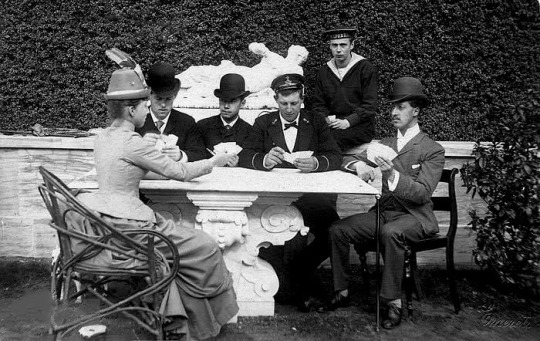
Cousins playing cards, late 1880's
Princess Alexandra of Greece and Denmark, Crown Prince Constantine of Greece and Denmark, Tsesarevich Nicholas, Prince George of Greece and Denmark, Grand Duke George Alexandrovich, Prince Albert Victor of Wales.
#alexandra georgievna#king constantine i#tsesarevich nicholas#George of Greece and Denmark#george alexandrovich#prince albert victor#1880s#danish royal family#nicholas ii#grand duke george#albert victor#alexandra of greece
47 notes
·
View notes
Text
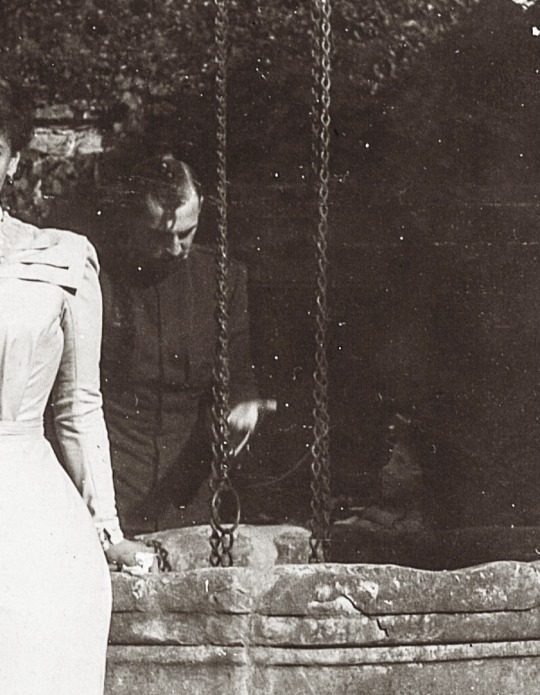
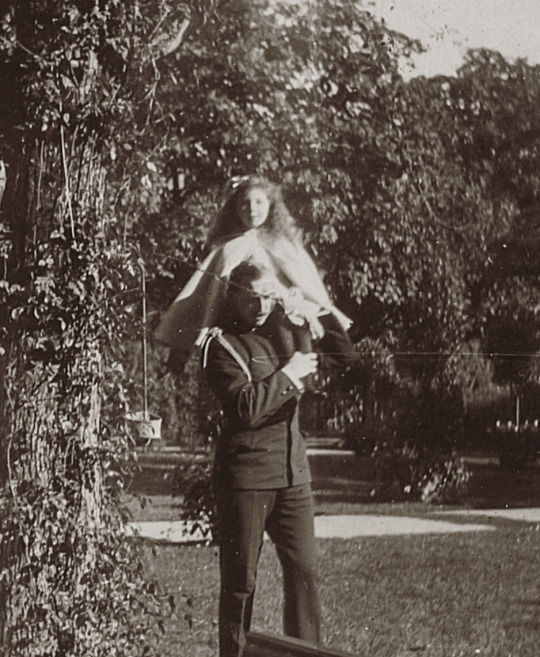
Candid moments between Prince Nicholas of Greece and Denmark aka “Greek Nicky” with his 1st cousin once removed, Princess Elisabeth “Ella” of Hesse, Wolfsgarten, Darmstadt, 1899
#awe cuties 🥰#✨😍🤍#prince nicholas of greece and denmark#prince Nicholas#greek royal family#princess elisabeth of hesse#ella of hesse#elisabeth of hesse#hessian royal family#hesse#wolfsgarten#1899#Nicholas of Greece and Denmark#greek Nicky#danish royal family
22 notes
·
View notes
Text
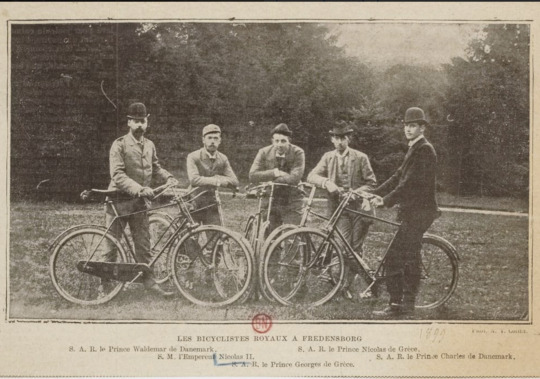
THE BICYCLE WAS ALL THE RAGE, SO THE ROYALS HAD TO GET INTO CYCLING
On the photo above, from left to right: Prince Valdemar of Denmark, Emperor Nicholas II, “Greek Georgie” (Prince George of Greece), “Greek Nicky” (Prince Nicholas of Greece) and Prince Christopher of Denmark. These guys really dressed up to go riding…neck tie, hat…
On the photo below, from left to right, Grand Duke Mikhail Alexandrovich…the jock of the group as usual, notice the handle of his bike; Cousin Victoria of Wales with an incredibly small waist, Queen Maud and her handsome and intelligent husband Hakoon VII.
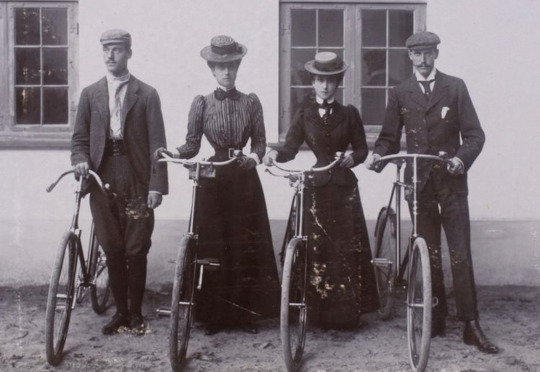
#russian history#imperial russia#nicholas ii#vintage photography#prince nicholas of greece and denmark#prince george of greece#Grand Duke Mikhail Alexandrovich#Princess Victoria of Wales#Queen Maud of Norway#King Haakon VII of Norway#prince Charles of denmark
17 notes
·
View notes
Text
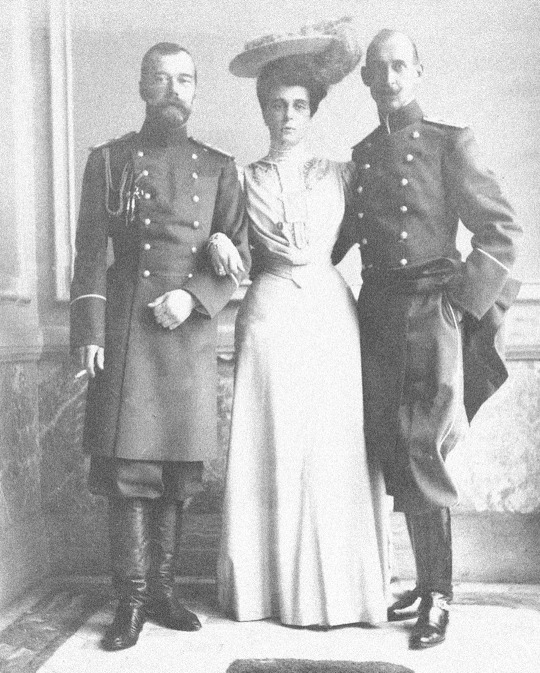
(L–>R)
Tsar Nicholas II of Russia with his 1st cousin, Grand Duchess Elena Vladimirovna of Russia, and her husband, Prince Nicholas of Greece and Denmark.
10 notes
·
View notes
Photo

Prince Constantine of Greece, Tsarevich Nicholas Alexandrovich, and Prince Albert Victor of the United Kingdom.
12 notes
·
View notes
Photo
Wonderful dry point work by Nicholas Panagiotti Zarokilli




Greek Princesses (and Romanov descendants), Olga, Elizabeth and Marina and their father Prince Nicholas of Greece and Denmark. They were the daughters of Prince Nicholas of Greece and Grand Duchess Elena Vladimirovna. Their paternal grandparents were King George I of Greece and Queen Olga Konstantinovna. Their maternal grandparents were Grand Duke Vladimir Alexandrovich and Grand Duchess Maria Pavlovna the Elder. During their various periods of exile from Greece, “Greek Nicky” was able to earn money for the family by selling his artwork. Elizabeth and Marina inherited their father’s artistic talent; Marina would sign her work as Marina de Grece or “MG,” and then after her marriage as “MK” for Marina of Kent.
#russian history#romanov dynasty#greek royal family#Greek Nicky#Grand Duchess Elena Vladimirovna#Prince Nicholas of Greece#Nicholas Panagiotti Zarokilli#Princess Olga of Greece#Princess Marina of Greece#Princess Elizabeth of Greece
212 notes
·
View notes
Text

Through her visits to her mother's family, Alexandra was no stranger to Russia or for that matter to the Orthodox religion, in which she too had been brought up. Settling into a palace of their own behind the Church of the Annunciation on the Neva embankment in St Petersburg, Paul and Alexandra's closest friends and companions were Ella and Serge. In fact, the two young grand duchesses, Elisabeth Feodorovna and Alexandra Georgievna, not only became great friends but were like sisters, as close to one another as their husbands had always been. 'I do love her so dearly', Ella wrote on one occasion to Alexandra's brother Prince Nicholas of Greece and in a further letter referred to herself as 'your own sisters sister'. (...) After doing the rounds of the family sick beds [after a typhus epidemic in 1889], which she likened to visiting a 'real family hospital', Ella, whose own evidently robust state of health saw her safely through the epidemic, went to sit with Alexandra Georgiyevna, who was now four months pregnant with her first child. Seeing Paul ill, Ella wrote, 'makes her very nervous and she will think it worse than it really is'. To help distract her, Ella took Alexandra to the opera (...). A month later, the epidemic had started to pass and the sick were restored to health. Despite a very high wind which whipped up the waters of the Neva and the city's canals, Serge and Paul both ventured out of doors, albeit by carriage. Their destination was the Winter Palace where, during the first week of December, they took part in a reading of a forthcoming production of Tolstoy's Tsar Boris, in which they were both to appear. With the Emperor's permission, the play was staged in the Hermitage theatre at the end of January.
"Ella: Princess, Saint And Martyr" - Christopher Warwick

#paul alexandrovich#alexandra georgievna#elizabeth feodorovna#sergei alexandrovich#romanov#romanov family#19th century#greek royal family#imperial russia
47 notes
·
View notes
Text



Prince Nicholas “Greek Nicky” of Greece and Denmark with his 1st-cousins-once-removed Grand Duchesses Olga and Tatiana Nikolaevna, 1899 🤍
#so sweet 🥹#prince nicholas of greece and denmark#Nicholas of Greece and Denmark#olga nikolaevna#tatiana nikolaevna#romanov#otma#romanovs#1899#greek royal family#danish royal family#wolfsgarten
23 notes
·
View notes
Text




Happy 89th birthday to Prince Edward, Duke of Kent!
Born 9 October 1935, Edward George Nicholas Paul Patrick is the elder son of Prince George, Duke of Kent, and Princess Marina of Greece and Denmark, a grandson of George V, a nephew of Edward VIII and George VI, a and first cousin of Elizabeth II. Edward's mother was also a first cousin of Prince Philip, Duke of Edinburgh, consort of Elizabeth II, making him both a second cousin and first cousin once removed to Charles III. He is 41st in the line of succession to the British throne.
Prince Edward began his education at Ludgrove, a preparatory school in Berkshire, before going on to Eton College and then Le Rosey in Switzerland. After school he entered the Royal Military Academy Sandhurst. He graduated from Sandhurst in 1955, as a second lieutenant in the Royal Scots Greys, the beginning of a military career which lasted over 20 years.
On 25 August 1942, Prince Edward's father, the Duke of Kent, was killed when his plane crashed in bad weather in Caithness. Prince Edward, at six years old, succeeded his father as Duke of Kent, Earl of St Andrews and Baron Downpatrick. He has held the title of Duke of Kent for over 82 years, making him the longest-serving duke in British history.
At York Minster on 8 June 1961 the Duke of Kent married Katharine Worsley, and couple have three children: George, Earl of St Andrews (62), Lady Helen Taylor, (60), and Lord Nicholas Windsor (54).
The Duke of Kent performed engagements on behalf of his cousin, the Queen, for over 50 years. He also acted as Counsellor of State during periods of the Queen's absence abroad. Upon the death of Queen Elizabeth II, the Duke of Kent became the oldest living descendent of King George V, and the last surviving descendent born in George V's lifetime.
33 notes
·
View notes
Text

"The Grand Duke and the Grand Duchess Vladimir spent their summers at Tsarskoe Selo. The Grand Duchess had the graceful bearing of a great lady of the Renaissance. She was born a Princess of Mecklenburg-Schwerin, and ranked immediately after the two Empresses. She was very able and intelligent and carried out all the duties of her position with perfect tact. She was always very kind to me, and was much entertained by accounts of my adventures. For a long time, I was in love with her daughter the Grand Duchess Helen Vladimirovna, later Princess Nicholas of Greece, whose beauty fascinated me. She had the loveliest eyes imaginable, and everyone fell under their charm." -Prince Felix Youssoupoff, Lost Splendor
#Grand Duchess Maria Pavlovna#Grand Duchess Elena Vladimirovna#Prince Felix Yusupov#Prince Felix Youssoupoff#Romanov#Yusupov#Yussupov#Youssoupoff#Youssoupov
128 notes
·
View notes